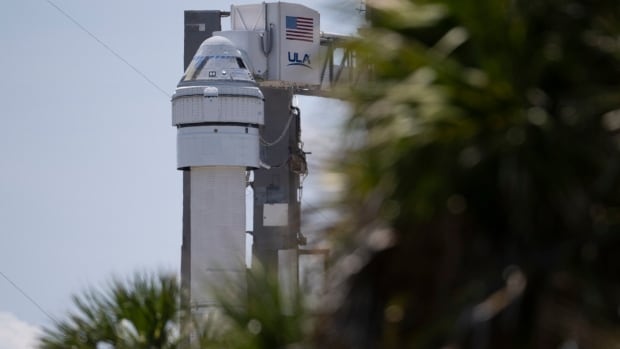Science
Today, Boeing, NASA and United Launch Alliance hope to finally have a successful crewed launch of Boeing’s new CST-100 Starliner spacecraft after two attempts were scrubbed.
Astronauts Suni Williams and Butch Wilmore will be heading to the International Space Station

Nicole Mortillaro · CBC News
·

Today, Boeing, NASA and United Launch Alliance (ULA) hope to finally have a successful crewed launch of Boeing’s new CST-100 Starliner spacecraft.
The launch is scheduled for 10:52 a.m. ET.
This comes after their second launch attempt was scrubbed with just three minutes and 50 seconds left on the clock on Saturday, with astronauts Suni Williams and Butch Wilmore strapped in and ready to go.
“We got really close today,” said Steve Stich, manager of NASA’s commercial crew program, in the news conference following the launch call-down.
“I know it’s a little disappointing. We were all excited. This is kind of the way space flight is.”

In that news conference, officials said the countdown clock automatically stopped due to a “failed power distribution source” on ULA’s Atlas V rocket, which initially triggered a launch hold. However, the rocket had an instantaneous launch window, meaning it had to launch at a precise time.
The teams replaced the part over the weekend.
“I really appreciate all the work by the NASA, Boeing and ULA teams over the last week,” Stich said.
“In particular, the ULA team worked really hard to quickly learn more about these issues, keep our NASA and Boeing teams informed and protect for this next attempt. We will continue to take it one step at a time.”
A long road
In 2014, NASA gave contracts to both SpaceX and Boeing to provide a new spacecraft capable of ferrying astronauts to the International Space Station (ISS), as the space agency had mothballed its space shuttle program and was reliant solely on Russian Soyuz rockets.
SpaceX successfully began launching astronauts to the ISS in 2020. However, Boeing has faced several setbacks and cost overruns, and has yet to conduct a successful crewed test launch.

Saturday’s scrub follows a previous attempt on May 6, which was called off due to an oxygen leak on ULA’s Atlas V rocket.
However, issues with the spacecraft were discovered once the rocket was rolled back to ULA’s Vertical Integration Facility, which also included a helium leak, which was not fixed ahead of Saturday’s launch.
NASA and Boeing said that there was no danger to the astronauts launching with such a small leak.
A second issue pertaining to how Starliner would deorbit and return to Earth was discovered and a workaround was developed.
If the launch happens as scheduled, Williams and Wilmore will dock with the ISS on June 6 at 12:15 p.m. ET.
And once again, it’ll be Canadian astronaut Joshua Kutryk who will be speaking to the pair from NASA’s Capcom, or capsule communicator, leading up to and during their launch. He is scheduled to fly the first operational flight (not a test, as this one is) of Starliner in 2025.
WATCH | More on Canadian Joshua Kutryk’s scheduled flight in 2025:

Canadian astronaut heading to International Space Station
Astronaut Joshua Kutryk will be the next Canadian to head to the International Space Station, flying there for a six-month mission starting in 2025. Meanwhile, Jenni Gibbons was named as Jeremy Hansen’s backup for the Artemis II mission to lunar orbit.
ABOUT THE AUTHOR

Based in Toronto, Nicole covers all things science for CBC News. As an amateur astronomer, Nicole can be found looking up at the night sky appreciating the marvels of our universe. She is the editor of the Journal of the Royal Astronomical Society of Canada and the author of several books. In 2021, she won the Kavli Science Journalism Award from the American Association for the Advancement of Science for a Quirks and Quarks audio special on the history and future of Black people in science. You can send her story ideas at Nicole.Mortillaro@cbc.ca.
- Follow Nicole Mortillaro on Twitter









